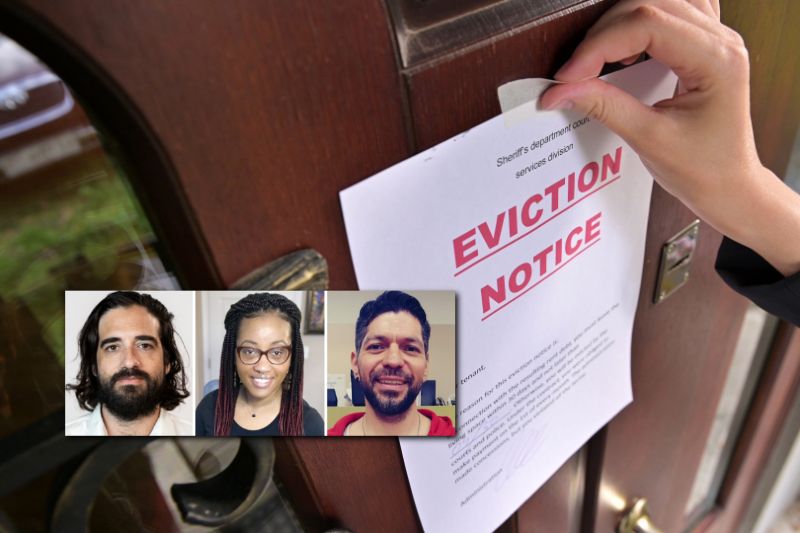Evictions – A Housing Crisis
(L-r): Juan Pablo Garnham, Audience and Community Engagement Editor, Eviction Lab, Princeton University; Dr. Shawnita Sealy-Jefferson, Principal Investigator and Leader, Social Epidemiology to Eliminate Disparities (SEED) Lab, Ohio State University; Francisco Duenas, Executive Director, Housing Now! California (Ethnic Media Services)
Evictions have been at the forefront of the housing crisis that plagues the United States for the longest time. Experts reveal that the housing crisis was already a concern back in 2016. With record evictions – legal and illegal – plaguing renters and homeowners, experts share the challenges and potential solutions to curb the housing crisis and protect tenants and homeowners.
According to Juan Pablo Garnham, Engagement Editor at Eviction Lab, Princeton University, 3.7 million evictions were filed in 2016 which equates to seven evictions per minute. Whether illegal or legal, evictions come with many repercussions and the tenant is at the forefront of catastrophe. Fortunately, some resources protect renters and allow them to fight evictions.
Dr. Shawnita Sealy-Jefferson, Principal Investigator at Social Epidemiology to Eliminate Disparities Lab, Ohio State University, notates some glaring statistics on tenants. She points out that many low-income families spend more than 30% of their income on rent and more than 70% on rent and utilities. Dr. Sealy-Jefferson also points out that evicted individuals are at a higher risk of disease, depression, and financial hardships.
While Dr. Jefferson and Garnham discuss the current context of the housing crisis, Francisco Duenas, Executive Director of ‘Housing Now!’, explains steps being taken by the California government to protect tenants and homeowners. Duenas gives a unique solution for people who are “rent burden” in California. He believes giving them a tax break when they are spending more than 30% of their income on rent could help ease the housing crisis. Duenas also breaks down the three-part “The Roadmap Home” which outlines protection, preservation, and production for more affordable housing.


